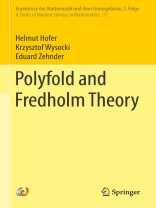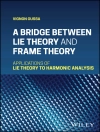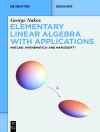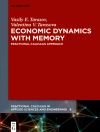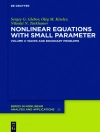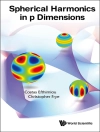This book pioneers a nonlinear Fredholm theory in a general class of spaces called polyfolds. The theory generalizes certain aspects of nonlinear analysis and differential geometry, and combines them with a pinch of category theory to incorporate local symmetries. On the differential geometrical side, the book introduces a large class of `smooth’ spaces and bundles which can have locally varying dimensions (finite or infinite-dimensional). These bundles come with an important class of sections, which display properties reminiscent of classical nonlinear Fredholm theory and allow for implicit function theorems. Within this nonlinear analysis framework, a versatile transversality and perturbation theory is developed to also cover equivariant settings.
The theory presented in this book was initiated by the authors between 2007-2010, motivated by nonlinear moduli problems in symplectic geometry. Such problems are usually described locally as nonlinear elliptic systems, and they haveto be studied up to a notion of isomorphism. This introduces symmetries, since such a system can be isomorphic to itself in different ways. Bubbling-off phenomena are common and have to be completely understood to produce algebraic invariants. This requires a transversality theory for bubbling-off phenomena in the presence of symmetries. Very often, even in concrete applications, geometric perturbations are not general enough to achieve transversality, and abstract perturbations have to be considered. The theory is already being successfully applied to its intended applications in symplectic geometry, and should find applications to many other areas where partial differential equations, geometry and functional analysis meet.
Written by its originators, Polyfold and Fredholm Theory is an authoritative and comprehensive treatise of polyfold theory. It will prove invaluable for researchers studying nonlinear elliptic problems arising in geometric contexts.
Tabla de materias
Part I Basic Theory in M-Polyfolds.- 1 Sc-Calculus.- 2 Retracts.- 3 Basic Sc-Fredholm Theory.- 4 Manifolds and Strong Retracts.- 5 Fredholm Package for M-Polyfolds.- 6 Orientations.- Part II Ep-Groupoids.- 7 Ep-Groupoids.- 8 Bundles and Covering Functors.- 9 Branched Ep
+-Subgroupoids.- 10 Equivalences and Localization.- 11 Geometry up to Equivalences.- Part III Fredholm Theory in Ep-Groupoids.- 12 Sc-Fredholm Sections.- 13 Sc
+-Multisections.- 14 Extensions of Sc
+-Multisections.- 15 Transversality and Invariants.- 16 Polyfolds.- Part IV Fredholm Theory in Groupoidal Categories.- 17 Polyfold Theory for Categories.- 18 Fredholm Theory in Polyfolds.- 19 General Constructions.- A Construction Cheatsheet.- References.- Index.
Sobre el autor
Helmut Hofer has contributed to nonlinear analysis, the theory of dynamical systems and symplectic geometry and topology. He is one of the founders of symplectic topology and is known for Hofer Geometry, his work on the Arnold conjectures and Weinstein conjecture, and, with various collaborators and co-authors, symplectic capacity theory, symplectic homology, symplectic field theory, finite energy foliations and their applications to dynamical systems, polyfold theory and feral curve theory. He currently holds the Hermann Weyl Professorship at the Institute for Advanced Study in Princeton.
Kris Wysocki has contributed to nonlinear analysis, the theory of dynamical systems and symplectic geometry and topology. He is known as one of the originators of the theory of finite energy foliations and its applications to Hamiltonian dynamics, the compactness result of symplectic field theory, applications of symplectic homology, and polyfold theory. At the time of his passinghe was Professor at Pennsylvania State University.
Eduard Zehnder is one of the founders of the field of symplectic topology. Well known are his contributions to Hamiltonian systems close to integrable ones. Jointly with C. Conley, he proved the Arnold Conjecture for symplectic fixed points on tori. This meanwhile classical result, referred to as the Conley–Zehnder Theorem, together with Gromov’s pseudoholomorphic curve theory led Zehnder’s student Andreas Floer to introduce the seminal concept of Floer Homology. With H. Hofer and K. Wysocki, he worked on global periodic phenomena in Hamiltonian and Reeb dynamics, compactness problems in symplectic field theory and on the theory and applications of polyfolds. He is currently Professor Emeritus at ETH Zurich.
